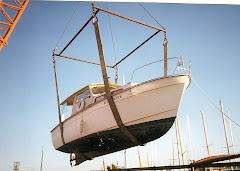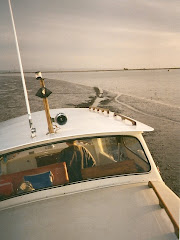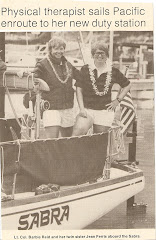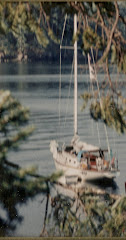The 20 foot launch was clinker built and carried 5 pair of oarsmen, seating 2 abreast. There were 2 dismountable masts with lug sails. The other was an 18 foot cutter carrying 3 pair of oarsmen and a single mast. Both boats were open. Both vessels had swivel guns attached.
A modern day example of a launch with 5 paired oarsmen.
Mr. Whidbey and Lt. Manby traveled in the cutter and Lt. Puget and Mr. Menzies went in the launch, along with the oarsmen, which totaled 20 men. They would carry enough supplies, ammunition and food/drink, trinkets and gifts for one week. Sam McKinney, in his book, Sailing With Vancouver, stated the food was prepared in England and was made up of wheat, dried soup and spirits, vegetables, and internal oxen organs. This mixture was boiled, then dried and cut into slabs. I can see why they might like to choose eating crow, as that actually sounds better to me. Every sailor was given a ration of rum/day which was 1/2 pint. This was mixed with a quart of water to make grog and given to the sailors twice a day. Since each master ship carried 100 men that would mean there would have to be a lot of rum on board each ship. To put this into perspective a friend calculated the results: 2281 gallons /year for each ship, 9125 gallons for the 4 year expedition, 253 kegs per ship at 38 gal/keg. That, my friends, is a lot of rum. I have trouble finding room for 4 rolls of paper towels and 4 roles of toilet paper.
Preparations were underway as the HMS Discovery sailed south reaching the southern tip of Restoration Point( named by Vancouver) on Bainbridge Island. Lat 47° 35 N, Long 122°28 W. At about 6 PM-1800hrs the HMS Discovery anchored somewhere south of Restoration Point and near a small, rounded island, Blake Island, in 35 fathoms of water. After the HMS Discovery anchored, Lt. Puget and Mr. Whidbey quickly departed in their small boats to explore the Indian village. They returned to the HMS Discovery and prepared for their early morning departure.
Another important and interesting thing to note at this time is, the Bainbridge Island--Restoration Point Indian Village was inhabited by the Suquamish tribe of about 80 Indians and under Chief Schweabe. His 12 year old son, Si’ahls, becomes Chief Se’alth, from which the city of Seattle, Washington is named. Later in life, he recalled seeing Captain Vancouver and the HMS Discovery. Captain Vancouver stated in his report that this Indian village was the most miserable village he had seen.
Confusion has a tight grip on my beginning research. I have often wondered where this pivotal anchorage was located and I was hoping to find its latitude/longitude in the journals of the explorers, at which time I could begin my own, upcoming journey from the exact starting point.
 |
| Blake Island Google Images |
After reading numerous journals, books, websites and speaking with author/editor- Richard Blumenthal, With Vancouver in Inland Washington Waters, I do not know, nor does he, the exact location of their anchorage. He believes the anchorage was about half way between Restoration Point and Blake Island. In his own replication cruise of Peter Puget’s Exploration, he chose to leave from one of the Washington State Marine buoys north of Blake Island. Based on different renderings, it appears to me, that they are anchored south of Restoration Point and about 2 miles from the northern shore with the small island located off their port. Mr. Menzies clearly states they are anchored close to the inner point of it-- the round island(Blake) western tip and in 35 fathoms of water.
This position is different from what course I extracted from Peter Puget by Robert Wing and Gordon Newell where they have them anchored off Restoration Point placing their departing course east of Blake Island or taking Blake to starboard. Some of the journals clearly state they took the island to port. Richard Blumenthal, also believes they took Blake to port. So, for me, its “Blake to Port,” and will become Shatoosh’s course, as it, “keeps the continental shore to starboard,” which were Captain Vancouver’s orders. As a retired Army Officer, I do know something about the importance of following orders and giving them.
What is clear in the Journals, is the fact that, after Lt. Puget departs at 0400 hrs, the HMS Discovery was re-anchored much closer to and inland of Restoration Point at about 0800 hrs. This allowed the Discovery to be near the Indian village in order to gain access to fresh water. This re-anchoring certainly adds to the confusion for historians/interpreters of the journals but later adds confusion for Lt. Puget on 27 May 1792, when he returns from his exploration. I can hear him saying to Mr. Menzies, in the dark, early morning hours at 0200hrs on 27 May 1792, “just exactly, where is the HMS Discovery anchored?”















